
GitHub Sponsors
Timeline
〰️ Alpha: Feb - May 23, 2019
〰️ Beta: May - Nov, 2019
Role
Lead Product Designer
Team
Sponsors team at Alpha launch:
1 engineering manager, 1 product manager, 1.5 product designers, and 4 engineers
Background
Explorational work to support funding had been proposed years before the May 2019 launch. The timing and appetite for open source funding seemed to overlap stronger than before, with more and more of the internet's tools becoming dependent on these projects (often times with only one or two sole maintainers).
Principles
Specifically for this quick turnaround, it was even more important to optimize for these principles while designing the alpha and beta program:
Champion users with prior funding experience
We elevated an alpha group with Patreon, OpenCollective, or non-profit grant experience to serve as "model sponsored developers" for future participants. This allowed us to focus less on writing guides for successful profiles or what to offer as tiers.
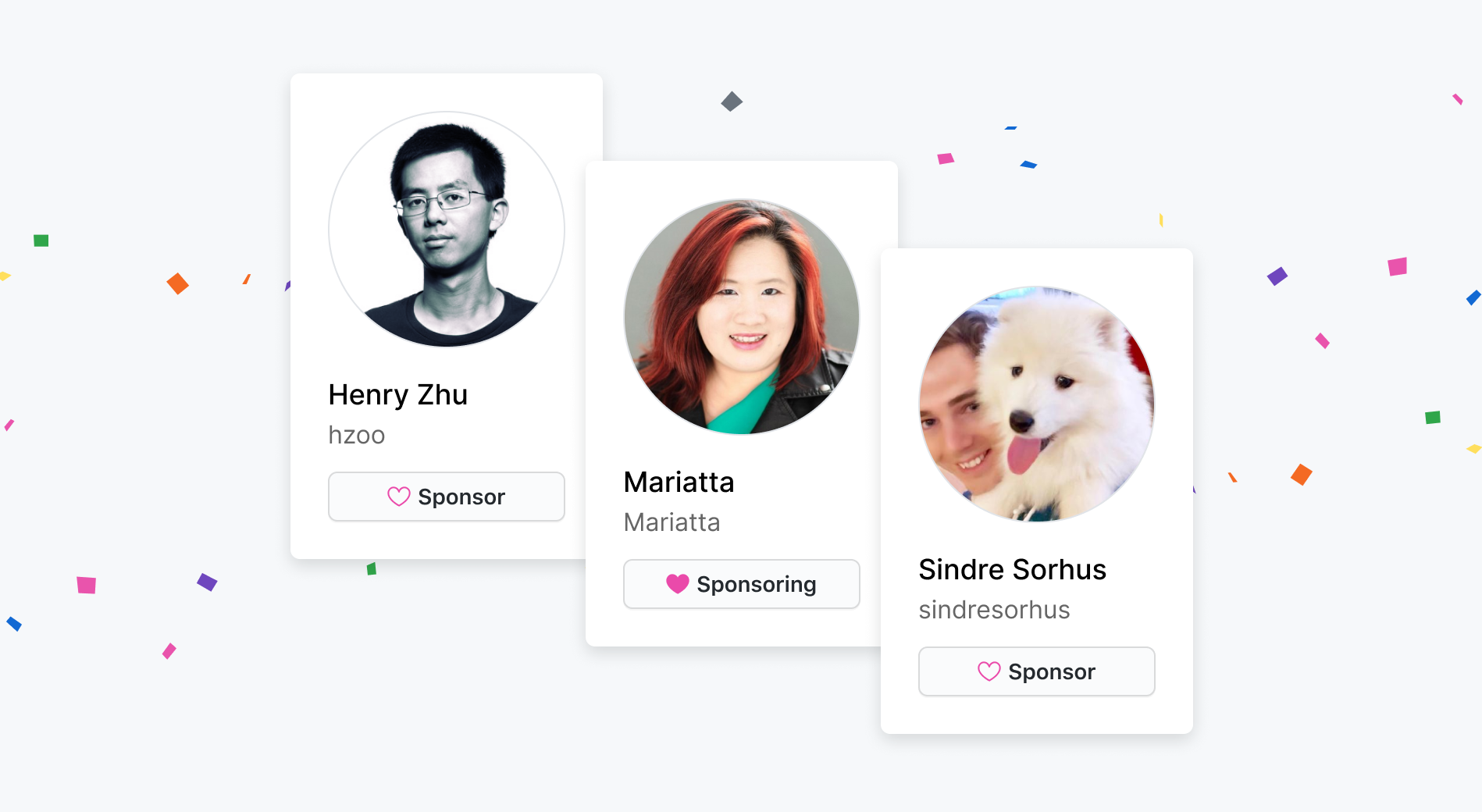
To create a snappy feedback loop with these model users, we created a private repository called github-sponsors-alpha to invite our small alpha group to. We were able to get quick gut checks and schedule onboarding sessions on prototypes within hours. This also served as a space for the group to give peer support and encouragement to each other. I helped maintain the community and triage bugs or feedback up until general availability on Nov 4, 2019.
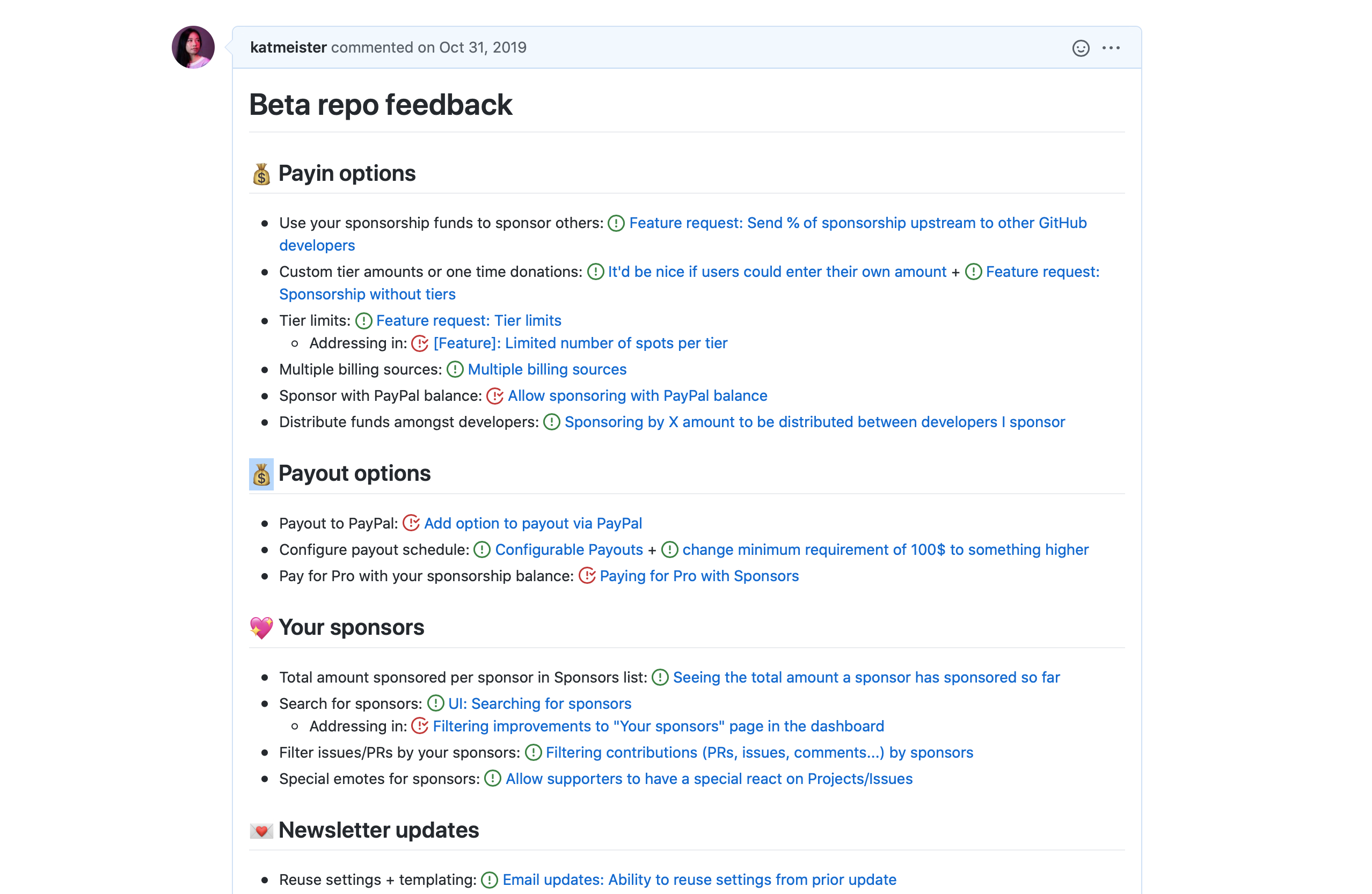
☝️ Triaged feedback
Developers should get paid for work they're already doing
Because the alpha started with user-to-user sponsorships (opposed to corporate relationships), the program ran on altruistic, crowdfunded power. This was a risk, but we knew developers were already going above and beyond to maintain projects—and that there was deep appreciation for this work. So we wanted to ensure that our Sponsored Developers didn't need to offer extra flashy rewards if they didn't want to: they can get funded for the valuable work they're already doing.

Although we had to enforce tiers for quid pro quo reasons, we tried to rely on existing GitHub work as much as possible. We surfaced pinned repositories on the Sponsors profile and surfaced a "Sponsor" button on the developer's hovercard and user profile for in-platform discoverability. I later designed a social share feature to further express altruistic sentiments and boost exposure.
Diverse representation, diverse funding
It was incredibly important to make sure our debuting pool of Sponsored Developers represented its diverse community members. This could help others with imposter syndrome actually SEE people like themselves being successful on the platform—and know that Sponsors is a welcoming community. And despite open source being comprised of 3% women and 1% non-binary contributors, we were able to launch with much higher representation and recognition.
For a while, I maintained a spreadsheet of diverse open source developers from many regions and backgrounds: mentors, community organizers, tech activists, artists, musicians, teachers, and more to feature on the Sponsors landing page.
Key flows
Sponsoring a user
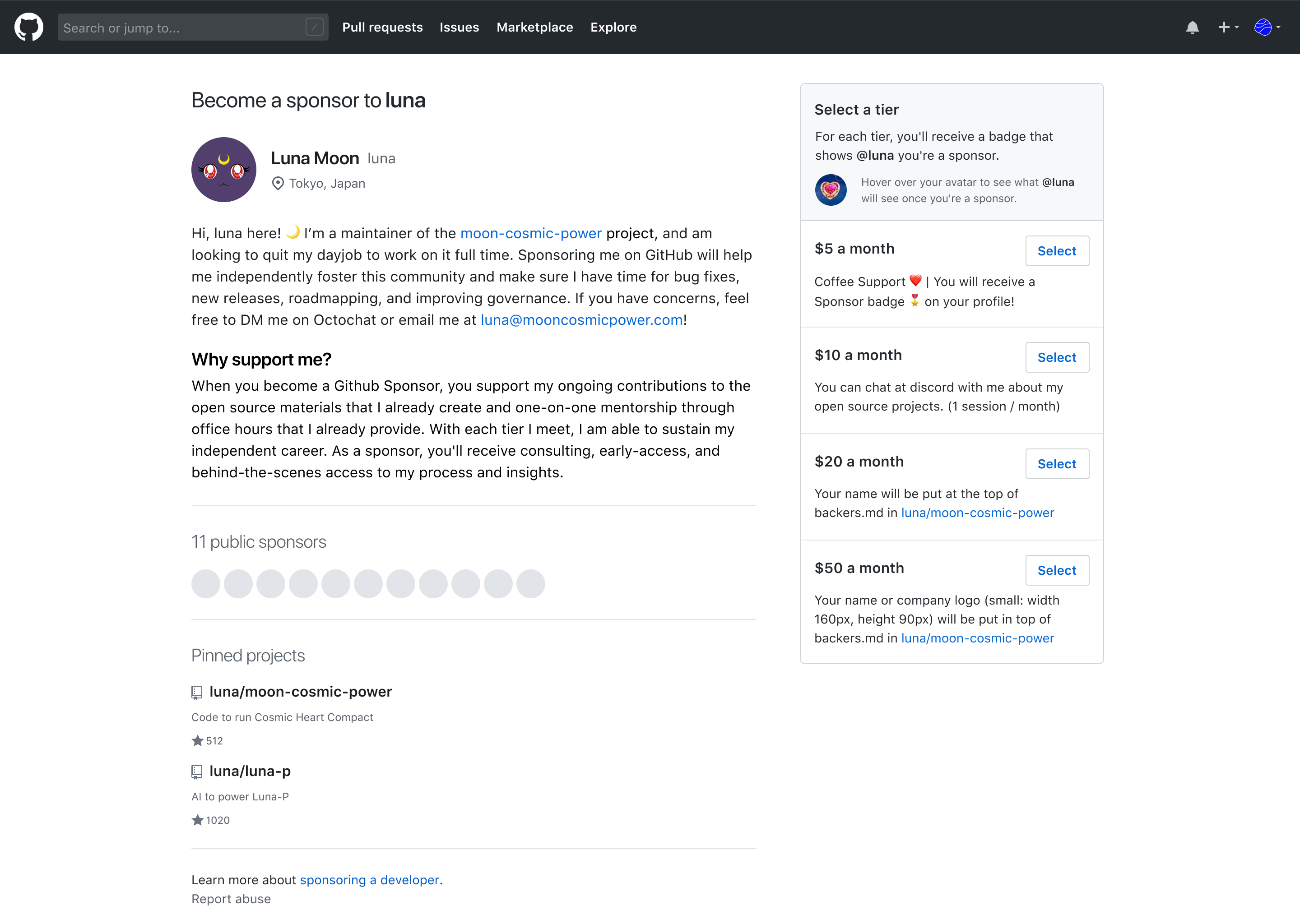
Sponsors profile dashboard
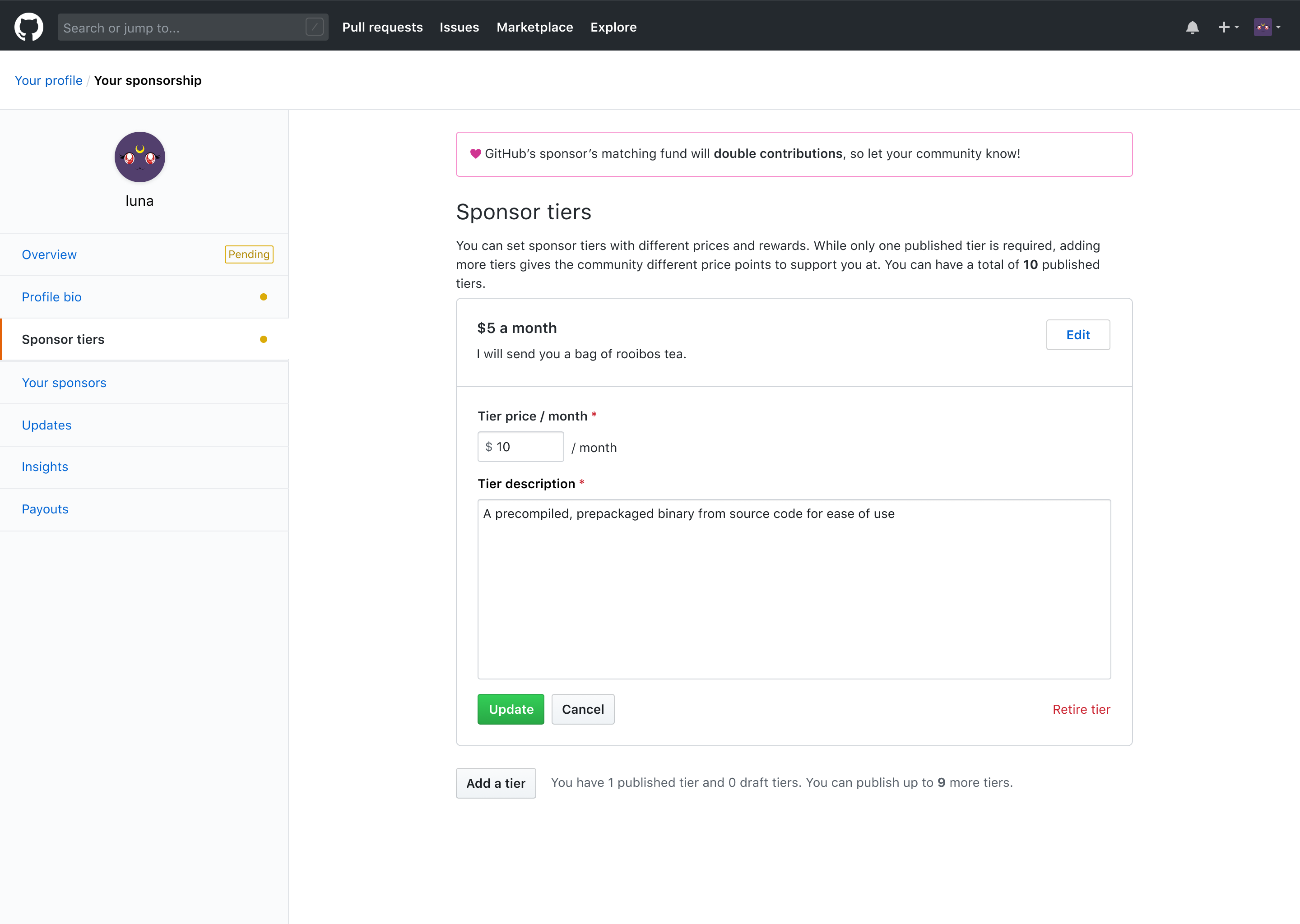
Iterative ships
After the initial alpha launch, I worked on improving the checkout experience, as well as the post-sponsoring experience.
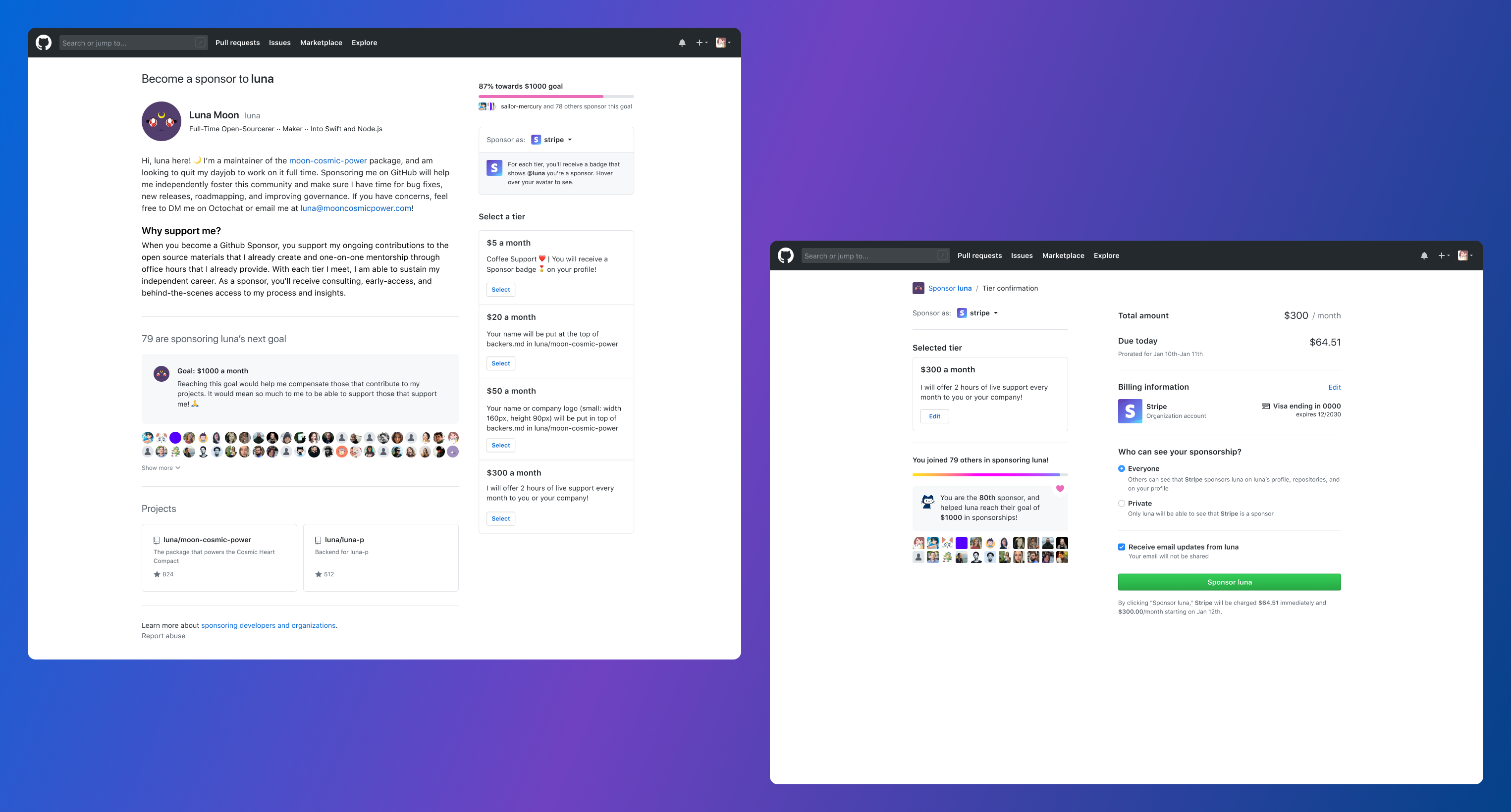
This was key to provide more real estate for Goals work that @pifafu shipped, as well as the corporate sponsorship experience.
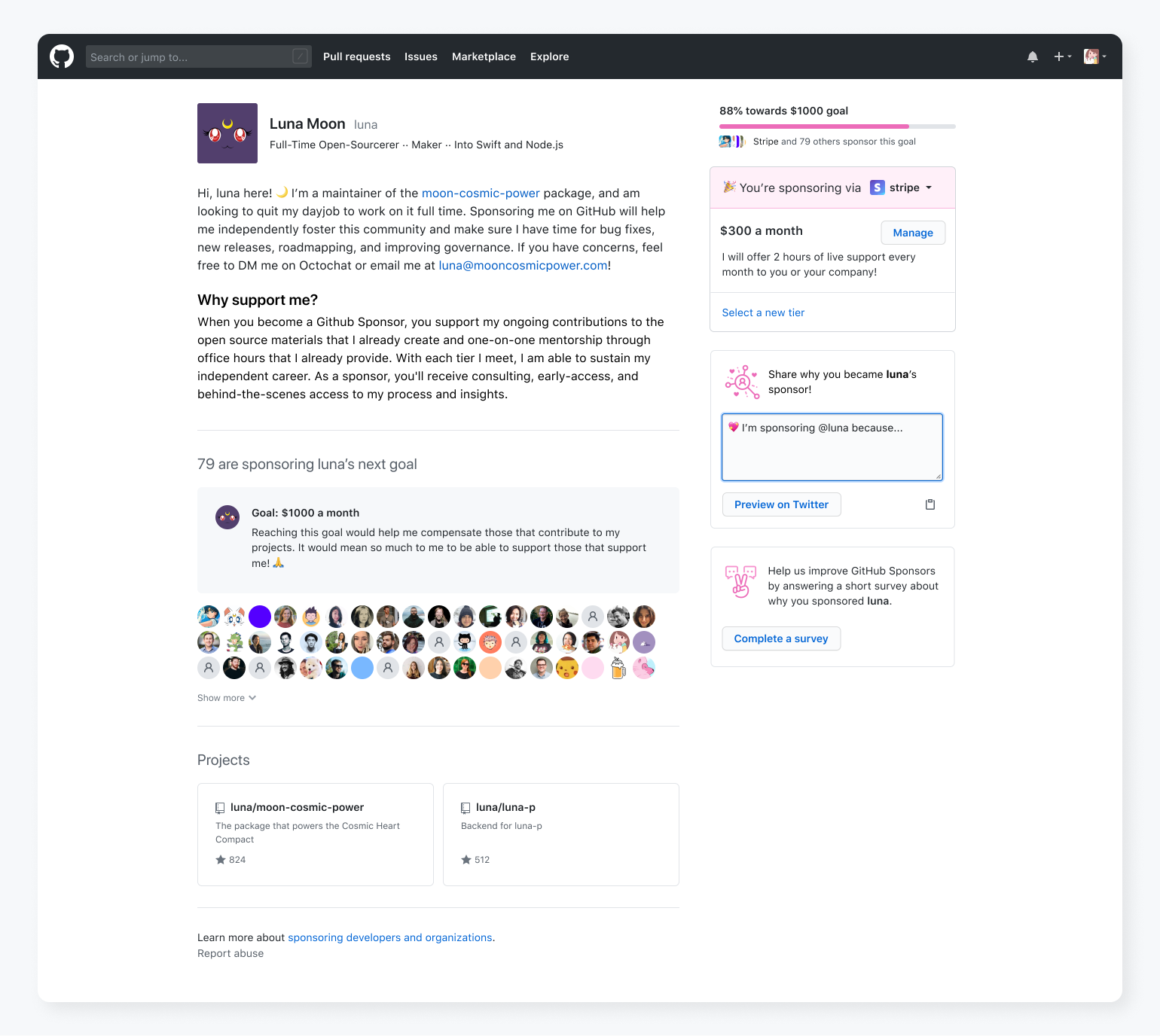
If you'd like to learn more about my work on this project, drop me an email!